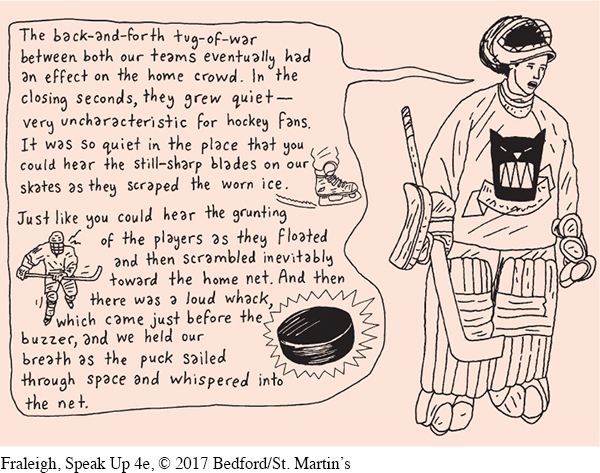Vivid Language
Vivid language grabs the attention of your audience with words and phrases that appeal to all the senses—
I remember those mornings at home only too well. Mom would call us if we overslept. She was downstairs making breakfast every morning at eight o’clock sharp. My brothers and I would fight to be the first into the bathroom.
Page 354
Now consider this more vivid version of Jamie’s story:
Mornings were memorable in my house. It was always cold in the room I shared with my brothers. With no curtains on our windows, light streamed in, poking us in the eyes before Mom called us down for breakfast. The smell of bacon wafting upstairs did the rest. Routinely, we shoved one another, forming a line outside the bathroom, knowing Mom would demand to know if we had washed up before coming to the table.
The second version conveys the same basic information as the first. However, it paints a more graphic picture of the scene, with stronger imagery—mental pictures or impressions—
To use vivid language, select descriptive words that evoke pictures, smells, textures, sounds, and flavors in your listeners’ minds. But use such language sparingly. If you overuse it, it may lose its effect.

Page 355
To see an example of a speech introduction that could use more vivid language, try Video Activity 12.1, “Roth, Emergency in the Emergency Room.”